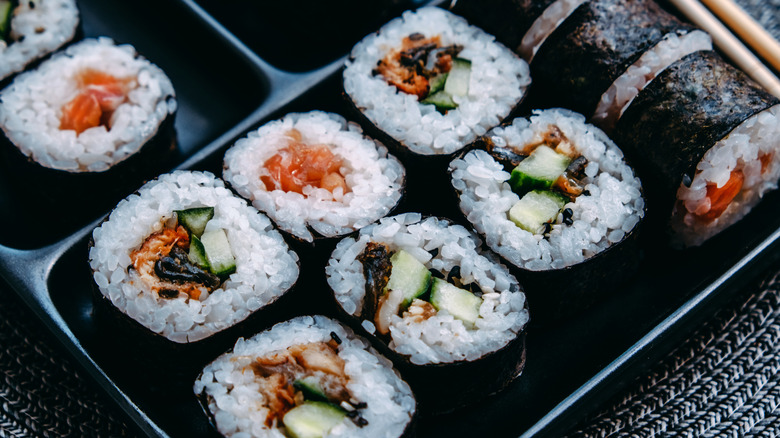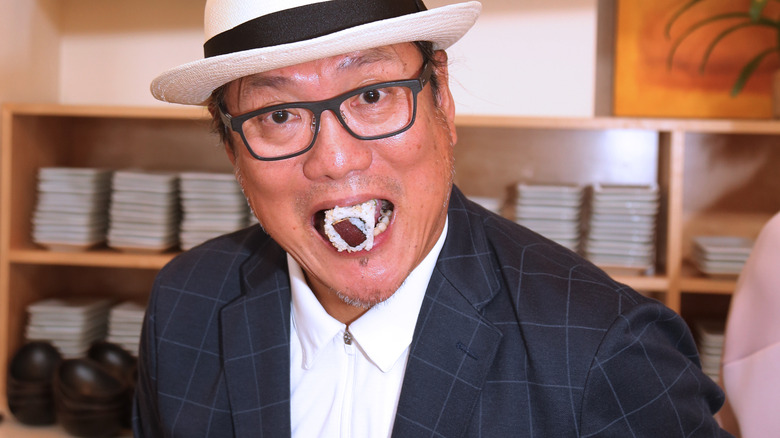The Filling Ratio To Remember When Making Sushi Rolls
Making a sushi roll, aka maki, seems simple. You pick a filling of raw or cooked seafood, maybe some crunchy vegetables, and possibly even a sauce and just roll it up in sushi rice and seaweed, or nori, using a helpful bamboo mat. If you've sat at a sushi counter and watched the chefs, you've seen how quickly they bring maki together. One must remember, though, that these are trained experts — don't even think of asking them for extra soy sauce — with deft hands who know not just how to roll sushi, but how to balance the myriad ingredients so that the flavors and structure are seamless.
We don't pretend to be masters in the art of sushi, but we do, from time to time, get a chance to talk to those who are. Recently, Tasting Table spoke with chef Masaharu Morimoto in advance of this year's Flavors of the Open presented by Dobel Tequila, an event celebrating the culinary side of the U.S. Open. Morimoto is legendary for the inventive sushi and Japanese cuisine that has graced the tables of his many restaurants like Morimoto Asia inside Disney World. Ergo, he was the perfect person to ask if there are any tips when it comes to filling a sushi roll. "I always recommend a 1:1 ratio of rice to other ingredients," Morimoto says. "While this isn't essential for everybody, the quantity of ingredients inside a maki roll is crucial to maintain balance."
Balance is key when it comes to sushi rolls
In the U.S., it's easy to lose sight of the origins and intentions of sushi. Sushi rolls here bulge with a preponderance of fillings such as fried shrimp and crab, then get covered with slices of avocado, tempura cracklings, and creamy, mayonnaise-based sauces. We even use the flavors of sushi to inspire other dishes, such as the sushi burrito and California roll bowls included in our nine best sushi recipes. But sushi has always been a cuisine of balance. That's not to say varied and bold ingredients have no place in a sushi roll, but that the rice and nori are coequal to the filling and not to be overshadowed.
Morimoto has been known to make some intricate maki, for sure, such as his famous "stained glass" roll that creates a stunning pattern when sliced. But for most sushi rolls, the chef opts for a simple approach. The rice should be carefully seasoned with rice vinegar, sugar, and salt, and gently spread to ensure fluffiness. The fillings Morimoto uses are austere, but of the highest quality. His maki is stuffed with tuna, crab, salmon, and cucumbers. To assemble, a simple ½ cup of rice is needed per sushi roll. Gently spread it on the nori sheet and cover with another ½ cup of fillings before carefully rolling, sealing, and slicing. The result is maki that is boosted by balance to become something more than the sum of its parts.

